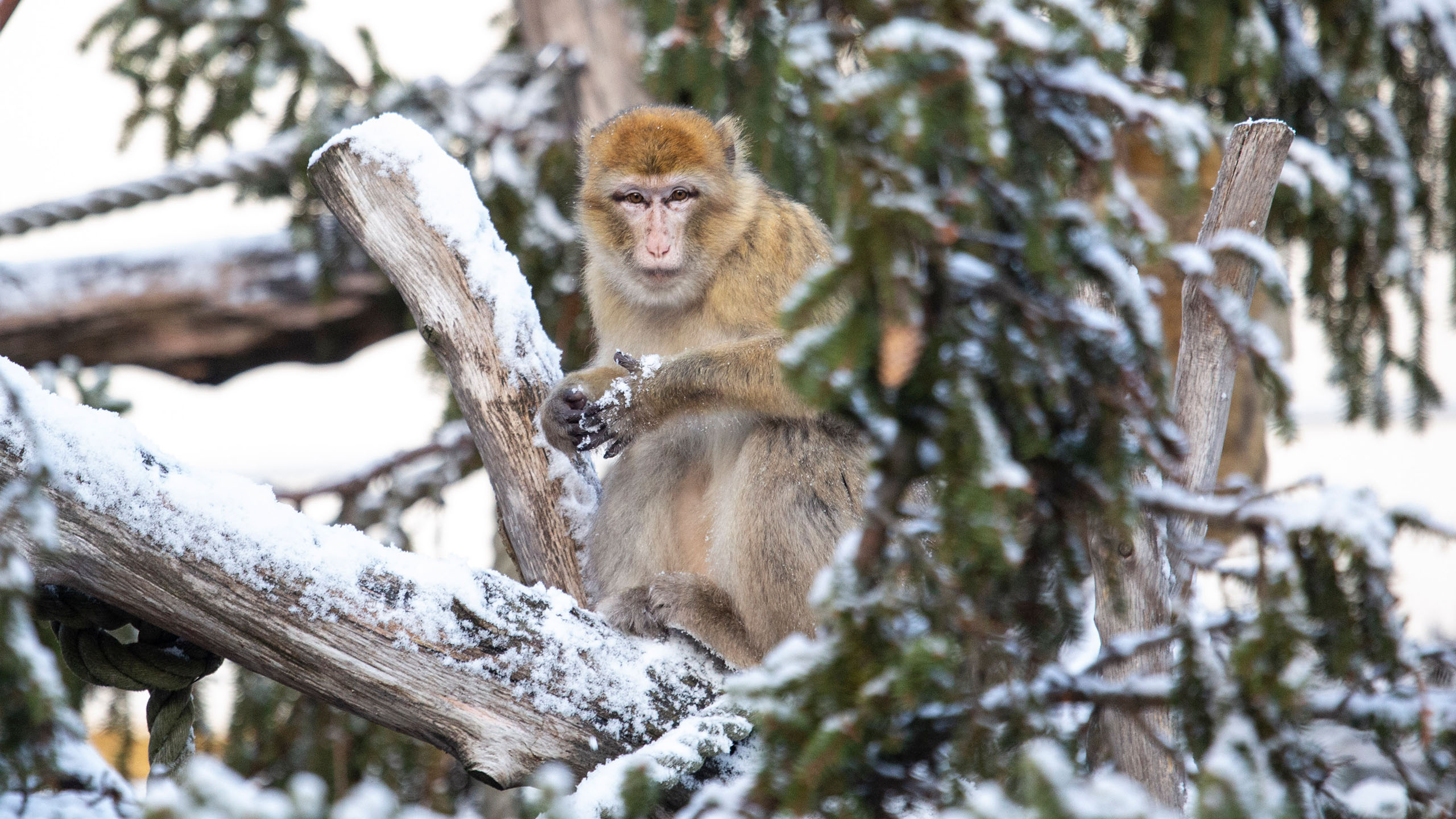
Barbary macaque
Macaca sylvanus
The Barbary macaque is the only free-living primate in Europe – besides the human. Barbary macaques are found in the Atlas Mountains of Algeria and Morocco along with a small population of unknown origin in Gibraltar. Their versatile habitat extends from mountainous cedar and pine forests to shrubby coastal vegetation and bare rocky slopes.
The hardened monkeys live in mountainous regions and are well adapted to snow and cold temperatures. In wintertime they feed on tree bark, leaf buds and pine needles. In summertime their diet is diversified by fruit, roots, seeds and sometimes insects.
The groups consist of various males and females. The males eagerly participate in rearing the young regardless of having own offspring. Both sexes look alike, the male is somewhat larger than the female.
Conservation
Between 7,000 and 10,000 Barbary macaques live in Algeria and Morocco. As late as the 1970s, there were twice as many. Alongside habitat loss, a big reason for the decline in macaques is the illegal trade in animals. In North Africa, wild macaques are sold as pets and are used to earn money in tourist attractions. Animals perform tricks or have their picutres taken with tourists for money. In addition, about 200 young animals are smuggled from Africa to Europe each year to become pets. An adult macaque is difficult to handle, so they are often abandoned on the street or killed.
This species and the individuals living in Korkeasaari Zoo are part of an ex-situ conservation programme by the European Association of Zoos and Aquaria EAZA, known as the EEP. The aim of the EEP is to maintain a healthy zoo population of the species, and to make reintroductions to the wild possible in the future.
Barbary macaaque is part of the CITES convention, which regulates the international trade of endangered or threatened animals and plants.
Korkeasaari Zoo has an ongoing project to support the conservation of this species in the wild. You can also support the conservation by donating!
The Barbary macaques of Korkeasaari Zoo originate with the Dutch AAP foundation, which takes in and cares for mistreated primates. The foundation’s caretakers have combined lone macaques rescued from bad conditions into new groups of monkeys.
Monkey Castle
